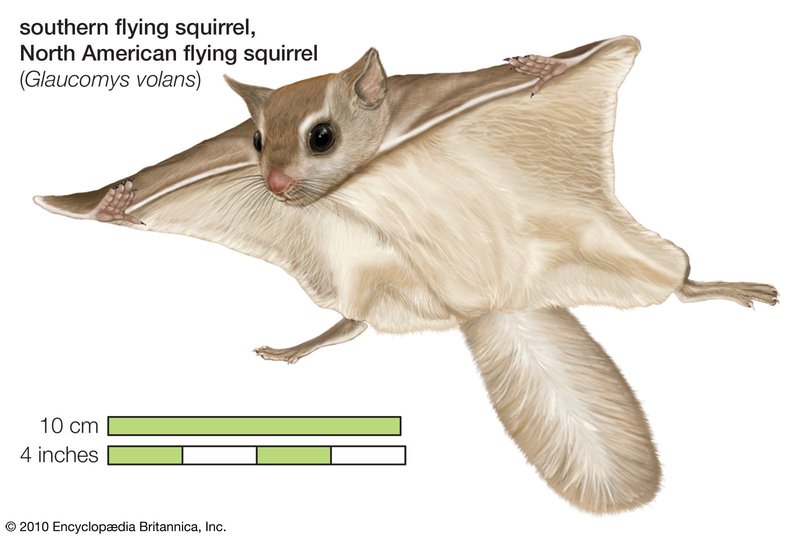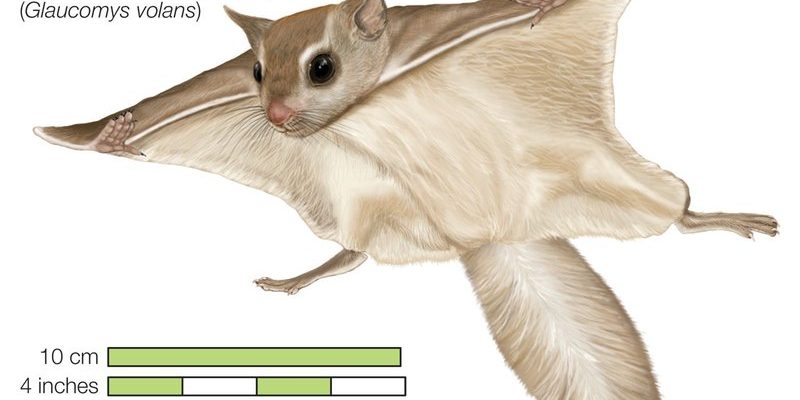
Let’s dig into their habitat and distribution. Think of flying squirrels as perfect representatives of the trees they inhabit. They thrive in environments that provide them not just shelter but also the food and space they need to glide gracefully from branch to branch. Here’s the thing—flying squirrels are not all the same. There are a few different species, and their preferences for living locations can vary wildly. So, keep that coffee close—we’re about to explore the fascinating world of flying squirrels!
Understanding Flying Squirrels: The Basics
Flying squirrels belong to the family Sciuridae, which includes all types of squirrels. They’re equipped with a special membrane called the patagium, stretching from their wrists to their ankles, allowing them to glide between trees. Unlike their more common tree-dwelling cousins, flying squirrels don’t actually “fly” in the traditional sense. Instead, they launch themselves from high branches and use their skin flaps to steer themselves as they descend.
You might be wondering how many types of flying squirrels there are. In North America alone, there are two main species: the Southern Flying Squirrel and the Northern Flying Squirrel. Each one prefers different habitats, which greatly affects where they make their homes.
Natural Habitats of Flying Squirrels
Flying squirrels primarily inhabit forests, as trees provide them with everything they need. They favor deciduous and mixed forests, especially those rich in *oak, hickory,* and *maple* trees. These environments offer plenty of holes for nesting and an abundance of food sources like nuts and fruits.
Interestingly, flying squirrels are also adaptable. They can thrive in urban areas as long as there are sufficient trees. For instance, you might spot a Southern Flying Squirrel living in a city park with tall trees. However, they do need a dense canopy to glide safely, so they steer clear of areas with scattered trees or open spaces.
Geographic Distribution
Flying squirrels are scattered throughout North America, Canada, and parts of Asia. The Southern Flying Squirrel is prevalent in the eastern and southern United States, while the Northern Flying Squirrel resides mainly in the northern regions of North America, including Canada and parts of the northeastern U.S.
To visualize this, imagine a cozy blanket covering the forests and woodlands—a warm and snug environment for these cute creatures. They thrive in places where the right trees grow and where their diet flourishes, reflecting a rich ecosystem that supports their lifestyle.
What Do Flying Squirrels Need to Thrive?
Understanding what flying squirrels need in their habitat can help us appreciate them even more. Here are the key elements they require:
- Food Sources: They primarily eat nuts, seeds, fruits, and even fungi. They need areas with a rich supply of these foods.
- Nesting Sites: Flying squirrels make nests in tree cavities or build leaf nests in dense foliage. The right trees and plenty of them are vital!
- Space to Glide: A continuous canopy is crucial. They need enough space to launch and glide without obstacles in the way.
Just think of it like this: if you were to create the perfect home for a flying squirrel, it would be a lush, forested area packed with trees, a variety of food sources, and plenty of height to allow them to glide freely.
Challenges to Their Habitat
As adorable as they are, flying squirrels face several challenges in their natural habitats. Habitat loss due to deforestation is a significant concern. As humans expand into their territories, flying squirrels often find themselves without suitable homes.
Urban development can fragment the habitats, leaving flying squirrels isolated. When trees are cut down, it’s not just a loss of home; it disrupts their food supply and makes it harder for them to glide safely between trees. Another challenge is climate change, which can affect the types of trees in their habitats and, consequently, their food sources.
Let me explain: Imagine you live in a town where the grocery store keeps closing down. Eventually, finding food becomes a hassle, right? That’s what these little guys face when their food sources dwindle or change due to environmental impacts.
Conservation Efforts for Flying Squirrels
Fortunately, there are efforts underway to protect flying squirrels and their habitats. Conservation organizations work to restore forests and promote sustainable land management practices. Planting native trees and creating wildlife corridors are some of the strategies being used to help these creatures thrive.
More awareness about the importance of biodiversity is also gaining traction. As people come to understand the habitats that flying squirrels need, they become more motivated to protect those areas. This could mean advocating for local parks or supporting policies aimed at preserving forested areas.
Flying squirrels are remarkable creatures that play a unique role in their ecosystems. By understanding their habitats and distribution, we can help ensure they continue to glide through our forests. It’s about creating spaces where they can thrive—places filled with the trees they love and the food they need.
So, the next time you hear a rustle in the trees or catch a glimpse of a flying squirrel, remember how special and vital these little gliders are to our environment. By protecting their homes, we preserve not just their existence but the beauty of nature itself.

